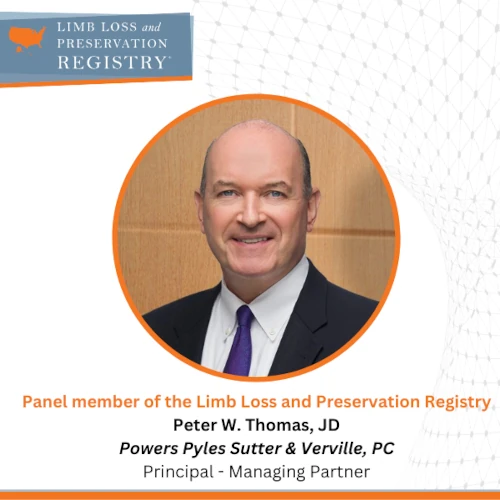
In the summer of 1974, two New York schoolteachers packed their children and grandparents into a station wagon hitched to a trailer and headed to Nova Scotia. Peter Thomas, age 10, his older sister and younger brother were thrilled to travel.
During the ride, a sudden swerve to avoid an oncoming car resulted in a collision with a stray snowplow, slicing the car’s rear section and sending the two sleeping boys flying onto the road. Peter suddenly became aware that his legs were severed, while his brother died upon impact.
So began the journey of a whole new life, including a chance meeting in the Canadian hospital ICU with a visitor who read about the accident and drove 200 miles to see him. The gentleman pulled the curtain around the bed, asked some questions, and then dropped his trousers and jumped out of his artificial legs onto the next bed. A bilateral amputee above the knee with a wife, kids, and job said: “Your life is not over. You’re going to do just fine.”
That conversation, now called peer support and practiced routinely by Amputee Coalition volunteers, materially impacted Peter’s attitude and ability to adapt to his injury.
“Following more than two months of rehabilitation, I returned home with prosthetic limbs, walked into my 5th grade classroom, and resumed a pretty normal existence,” he shares.
By the time Peter graduated high school, he was walking all day, earning top grades, and was elected president of the senior class. Peter focused on the positive, determined to get an education and office job.
With diplomas from Boston College and Georgetown Law School, he volunteered with a new, nonprofit group, the National Academy for the Advancement of Orthotics and Prosthetics (NAAOP), and worked to increase federal funding for O&P research and development. He was intimately involved in getting national O&P research legislation enacted in 1990, became involved with the American Trauma Society, and served on its board for 15-plus years, helping to establish the Trauma Survivors Network.
Peter co-authored a book on the Americans with Disabilities Act of 1990, a time of increased emphasis on people with disabilities and non-discrimination. In 1997, President Clinton appointed him to the President’s Commission on Healthcare Quality and Patient Rights, which led to recognition of data collection, function measurement, and outcomes as critical benchmarks for assessing what works and merits investments in the healthcare system.
He joined the Powers Law Firm, which focuses on healthcare, rehabilitation law, and disability advocacy work, married and raised three sons. Thirty-one years later, Peter practices with the same firm as managing partner and credits a positive attitude as the foundation for overcoming any challenge or disadvantage.
Today, he continues to advocate, serving as a member of the External Collaborative Panel of the Limb Loss and Preservation Registry (LLPR), which moves the field toward evidence-based practice to complement experience and expertise of the practitioner. LLPR follows, tracks, and analyzes key data elements and functional outcomes to identify ways to improve care with a goal to collect as much data as possible from O&P practitioners, hospitals and hospital systems, therapists and therapy offices.
Utilizing numerous measurement tools and mechanisms to track this data in a given patient population, the LLPR aggregates, de-identifies, and manipulates the data to analyze what will improve care for particular subpopulations of people with and facing limb loss. The LLPR was created through federal research funds from NIH and the Department of Defense, but it will soon become an independent entity, relying on funding from the private sector and financial support from those who benefit from what the registry offers to advance care.




